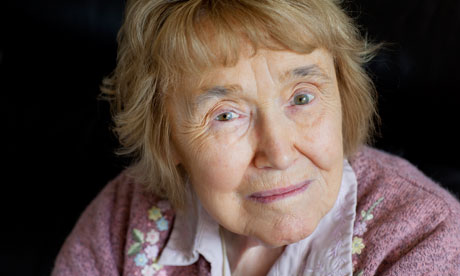
Lorna Wing can recall the exact moment she realised that her daughter, Susie, was different. They were on a train, sitting opposite another mother and baby, also around six months old. The other child pointed at things through the window, glancing back at his mother to check her attention. It was, explains Wing, something that Susie never did. "A cold chill settled over me and I became very worried," she says.
Despite years of medical training, Lorna and her husband John, both psychiatrists, knew nothing about autism when Susie was born in 1956. "It might have been mentioned once in a lecture, but as for facts or prevalence, no one knew anything." So Susie's diagnosis, at three, left them reeling.
Determined to change things for children like Susie, and their parents, Lorna switched her professional attention. More than 50 years later, she is one of the world's leading experts in the field, and in 1962 helped found the National Autistic Society. Her research has been instrumental in defining autism as a spectrum, ranging from those severely affected to the – previously ignored – very high functioning. In 1981 she coined the term Asperger's syndrome (after Hans Asperger, an Austrian doctor who first recorded autistic tendencies in children with high IQs), a sub-group of autism without learning disability, thought to include Albert Einstein.
Now 83 and semi-retired, Wing is delighted that the world of autism is unrecognisable from those dark days. "When Susie was diagnosed there was no support for parents and children," she recalls. "We felt so suddenly and unexpectedly different to everyone else. Now there is a lot out there, and there are lots of good books. The huge change that has happened is the general recognition that autism exists," she says.
In the 1950s the condition was thought to affect four or five children in 10,000. Today's greater awareness, and the work of Wing and her colleagues, places its prevalence at around one in 100: a ratio Wing considers accurate but it has led to claims of an autism epidemic. Wing says: "I can't see any evidence for an increase in numbers. There are more diagnoses because we now know about the brighter children as well. But who knows? It is conceivable that human beings are evolving to have more autistic traits because they are so useful."
Another change has been a focus on the positive elements of autism; a kind of autism pride. "I do believe you need autistic traits for real success in science and the arts, and I am fascinated by the behaviours and personalities of musicians and scientists," says Wing. She also believes that most of us have some autistic traits. "One of my favourite sayings is that nature never draws a line without smudging it. You cannot separate into those 'with' and 'without' traits as they are so scattered."
Yet while welcoming the growing acceptance that those with autism may have much to contribute to society, Wing worries that this may detract from the needs of those at the lower end of the spectrum. She says: "Youngsters with Asperger's syndrome are speaking up for themselves. Many see it as a difference not a disability, but that is a good and bad thing. For those with classic autism – like my Susie – it certainly is a disability."
This is one reason why Wing is supportive of proposed changes in diagnosis, to be implemented in 2013, which will assimilate Asperger's syndrome and several of the confusing autism sub-groups (childhood disintegrative disorder, pervasive developmental disorder not otherwise specified, for example) into one definitive diagnosis of autistic spectrum disorder.
Many with Asperger's syndrome are unhappy about the change, but Wing was a leading proponent of the move and feels it will improve understanding and support. "It is not possible to draw neat lines between sub-groups," she explains. "I feel it is safer using the autistic spectrum which is based on the one consistent thing – problems with the social instinct. We should keep the descriptions of different groups but be less rigid. We need to see each child as an individual; to help them we need to understand all their particular skills, difficulties, behaviours and emotions."
This is a lesson Wing learned through personal experience, she says. "Susie helped me in my work and it, in turn, helped me understand her better." Susie died in 2005, aged 49. The menopause had plunged her into a period of particularly difficult behaviour and she began to obsessively drink huge quantities of fluid. In the end she severely diluted her blood and died of a heart attack. "We were devastated. We were so close to her," says Wing. "She couldn't express her emotions but when you came home, her face would light up. That was absolutely wonderful."

